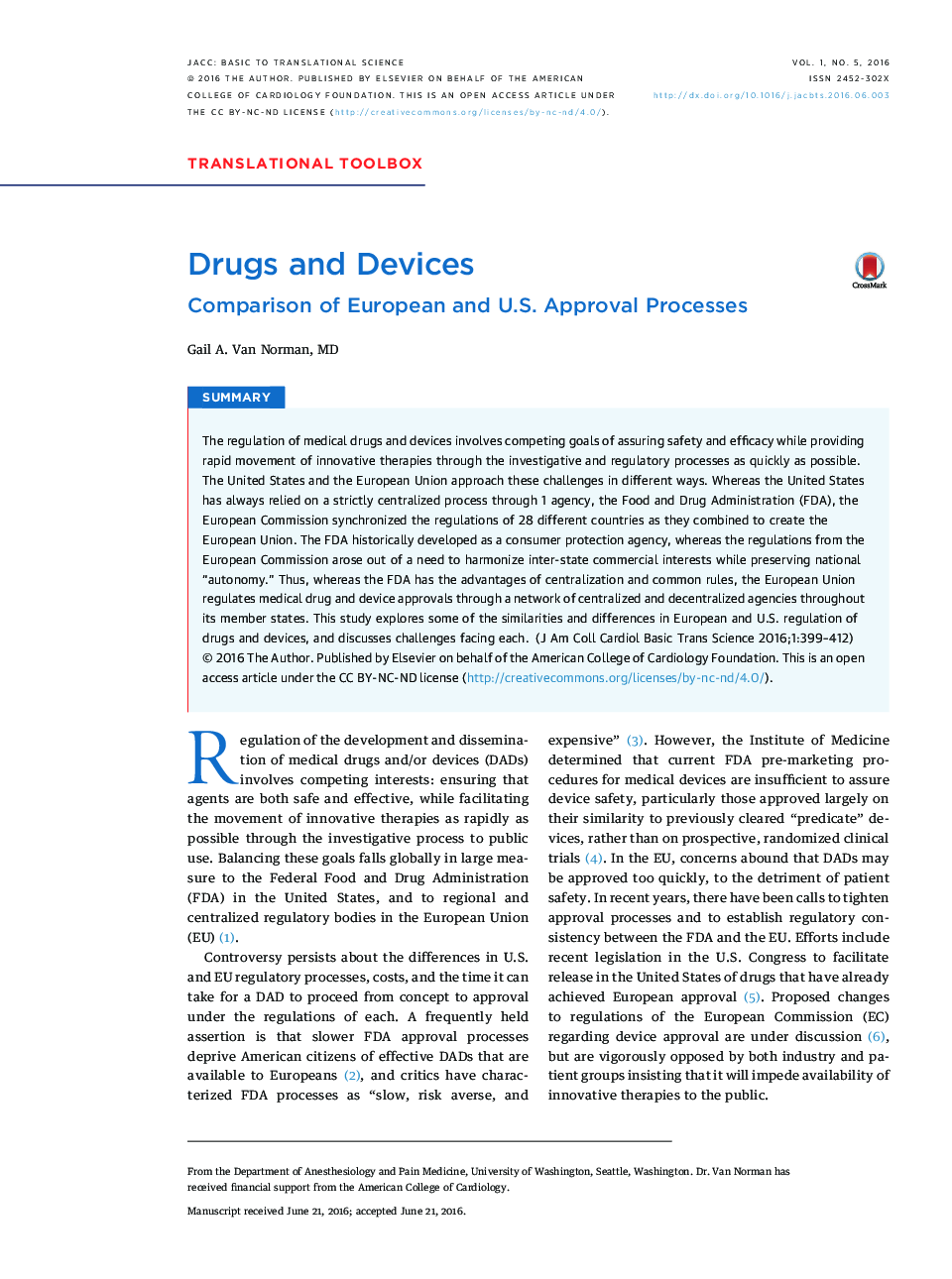| Article ID | Journal | Published Year | Pages | File Type |
|---|---|---|---|---|
| 2937544 | JACC: Basic to Translational Science | 2016 | 14 Pages |
SummaryThe regulation of medical drugs and devices involves competing goals of assuring safety and efficacy while providing rapid movement of innovative therapies through the investigative and regulatory processes as quickly as possible. The United States and the European Union approach these challenges in different ways. Whereas the United States has always relied on a strictly centralized process through 1 agency, the Food and Drug Administration (FDA), the European Commission synchronized the regulations of 28 different countries as they combined to create the European Union. The FDA historically developed as a consumer protection agency, whereas the regulations from the European Commission arose out of a need to harmonize inter-state commercial interests while preserving national “autonomy.” Thus, whereas the FDA has the advantages of centralization and common rules, the European Union regulates medical drug and device approvals through a network of centralized and decentralized agencies throughout its member states. This study explores some of the similarities and differences in European and U.S. regulation of drugs and devices, and discusses challenges facing each.
